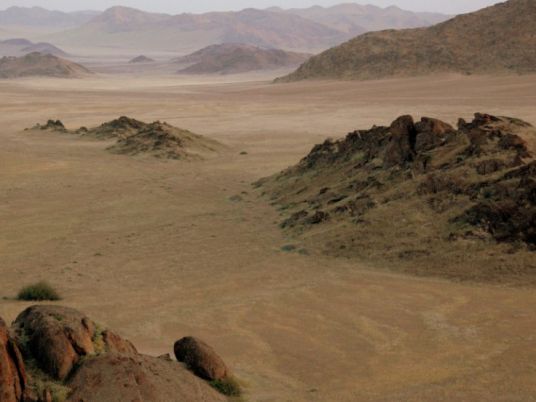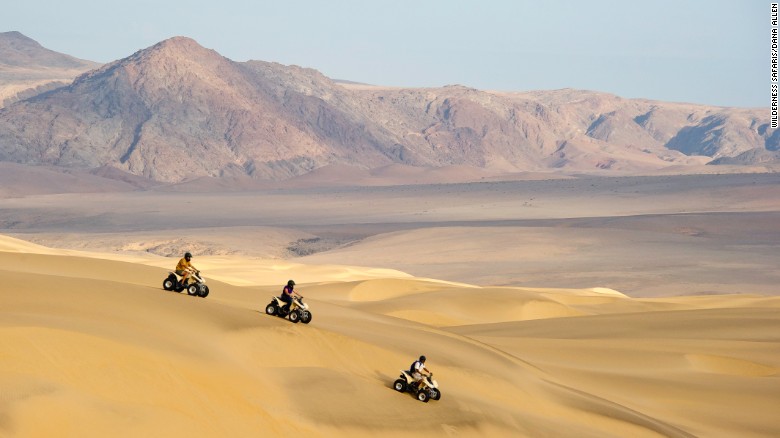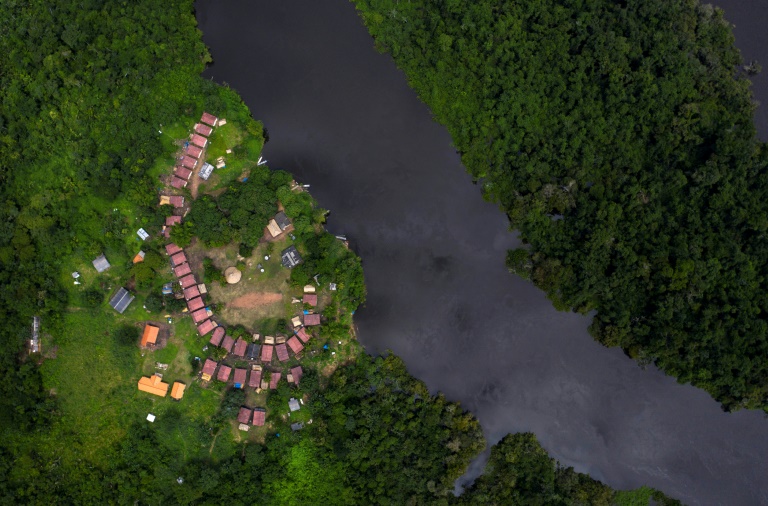
The coast surrounding the Namib Desert is so inhospitable that Portuguese sailors once referred to it as "The Gates of Hell."
A brutal, inhospitable environment, the Skeleton Coast has claimed many ships and many lives over the years. However, this once dreaded land has now become an unlikely tourist destination.
Here's five reasons why you should make the place your travel destination for 2016:
Superhero animals
One of the oldest and driest deserts in the world
The harsh desert stretches out more than 30,000 square miles and receives less than .4 inches of rain per year. It's a tough place to be a tourist — and that's with a 4×4 and supplies on hand. Now imagine being an animal and calling the place home.
And yet many do. From lions to elephants, the extreme climate has not deterred some of nature's finest beasts, though many have had to adapt to survive.
Dr. Philip Stander, a zoologist living and specializing in the Namib Desert, says "in time, a lot of animals have an adaptation," and their desert habitat results in "better kidney function."
He argues that all of the desert's mammals are "strategic" when it comes to dealing with the lack of water. "It's the super athletes that live here. Because certainly the weak will not survive."
The "red women"
How humans and animals adapt to life in a desert
The Himba have called the Namib Desert their home for countless generations, living in the Kunene region close to Angola. Known for their distinctive skin and hair, colored red with ochre, the semi-nomadic people traditionally relied on livestock, but today they're finding new ways of living.
Some are now working in the tourism sector in luxury camps such as Serra Cafema, where they are able to educate international tourists about Himba life.
"It makes [it] easier for the other people to understand the culture," argues Kaimbi, a Himba housekeeper.
Camp guide Dawid explains that most Himba "prefer to work and go back to their settlements (after a few months), because they want to be and stay in their traditional way. But if you get an opportunity to come work for the camp, to support your family, why not?"
Unusual history tours
An inside look at Namibia's 'Skeleton Coast'
A visit to the Hoanib Skeleton Coast Camp requires a lot of effort, but the rewards are manifold. Only accessible by light aircraft, the location is so remote that food has to be shipped in from 500 miles away.
"They say you can scream as loud as you want and no one will hear you," says the camp's general manager, Clement Lawrence.
"It is a scary thought."
But there's more to the area than simple isolation. A short drive reveals an unusual history tour. The coast is a living museum of the victims of the Benguela Current, which has downed numerous ships. Visitors can see their wrecks dotted along the shore.
Among the wreckage is a British liner called the Dunedin Star, which was beached in the 1940s by her master after hitting a reef (although some say it was the victim of a German U-Boat). Up the coast, an arch of whale bones marks the graves of two crewmen from tugboat The Sir Charles Elliott, which made a failed attempt at rescue.
For those less inclined to the macabre, two desert oases, the Klein Oase and Auses Spring, can be visited a short distance away.
Some of the clearest skies in the world

Namibia offers stunning views of the Milky Way.
Light pollution is almost non-existent on the Skeleton Coast — not surprising considering it's in one of the quietest corners of one of the world's least populated countries. The area is a stargazer's paradise.
The Milky Way is able to put on a majestic display against the black backdrop, and the galaxy bursts bright and brilliant in the night sky. If you've got a telescope, pack it — you might even be able to see the Tarantula Nebula, a spidery cloud of dust and gas, and one of the Milky Way's biggest star factories.
Dune trekking

Visitors to Serra Cafema can venture out on quadbike tours and explore the desert's imperious dunes.
There's a lot of sand in the Namib Desert, and its few inhabitants have found some pretty fun ways to explore it.
Sandboarding is popular, and visitors can create their own "roaring dune" if they travel fast enough. Lawrence explains the physics:
"By moving air down fast enough, you cause vibrations. And the air particles start escaping the sand dune. And those vibrations make a sound."
Or, you can indulge your inner-Mad Max and go quadbike trekking. The latest movie in the post-apocalyptic series was filmed in Namibia.
Click here for the original story.




